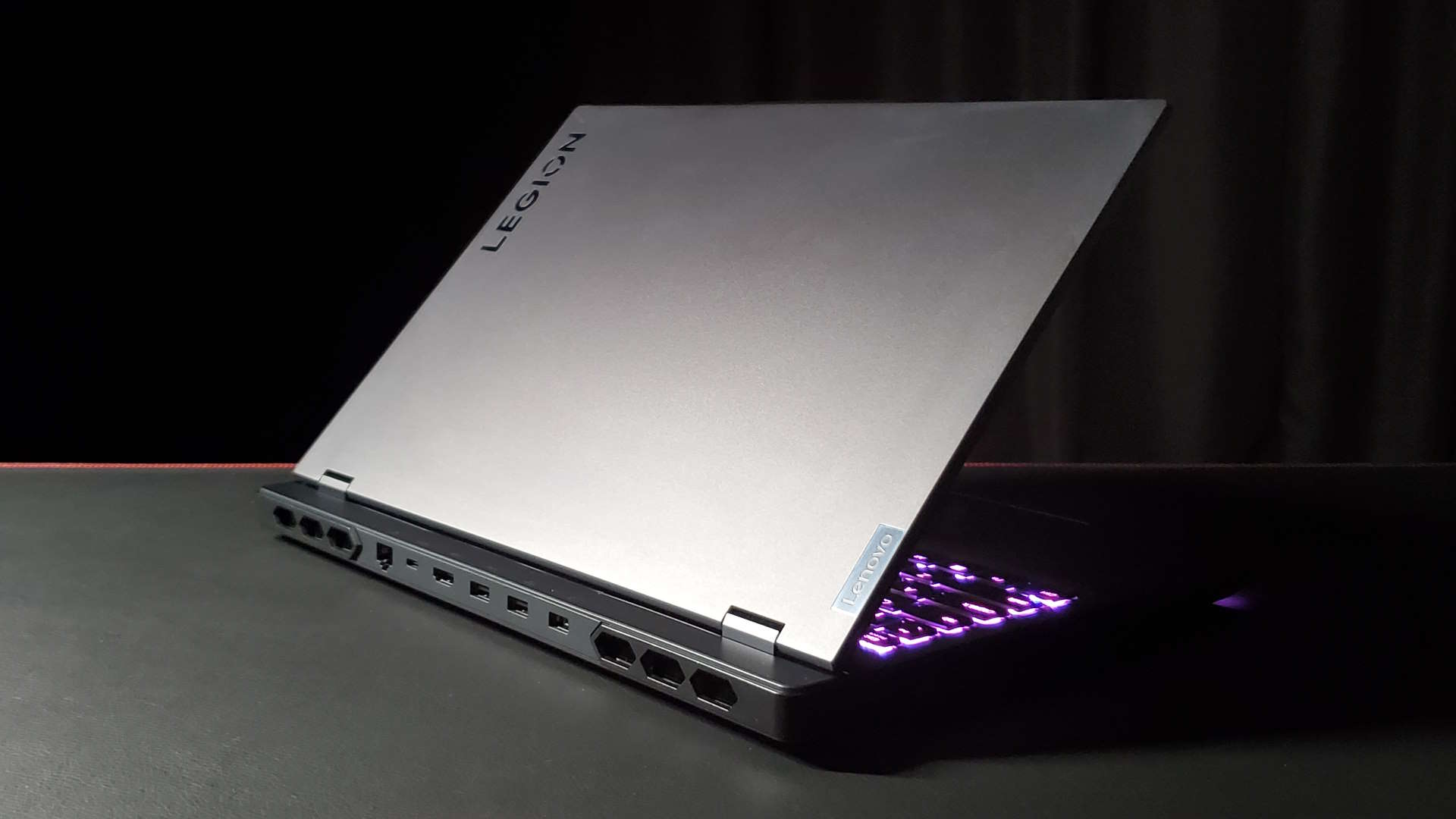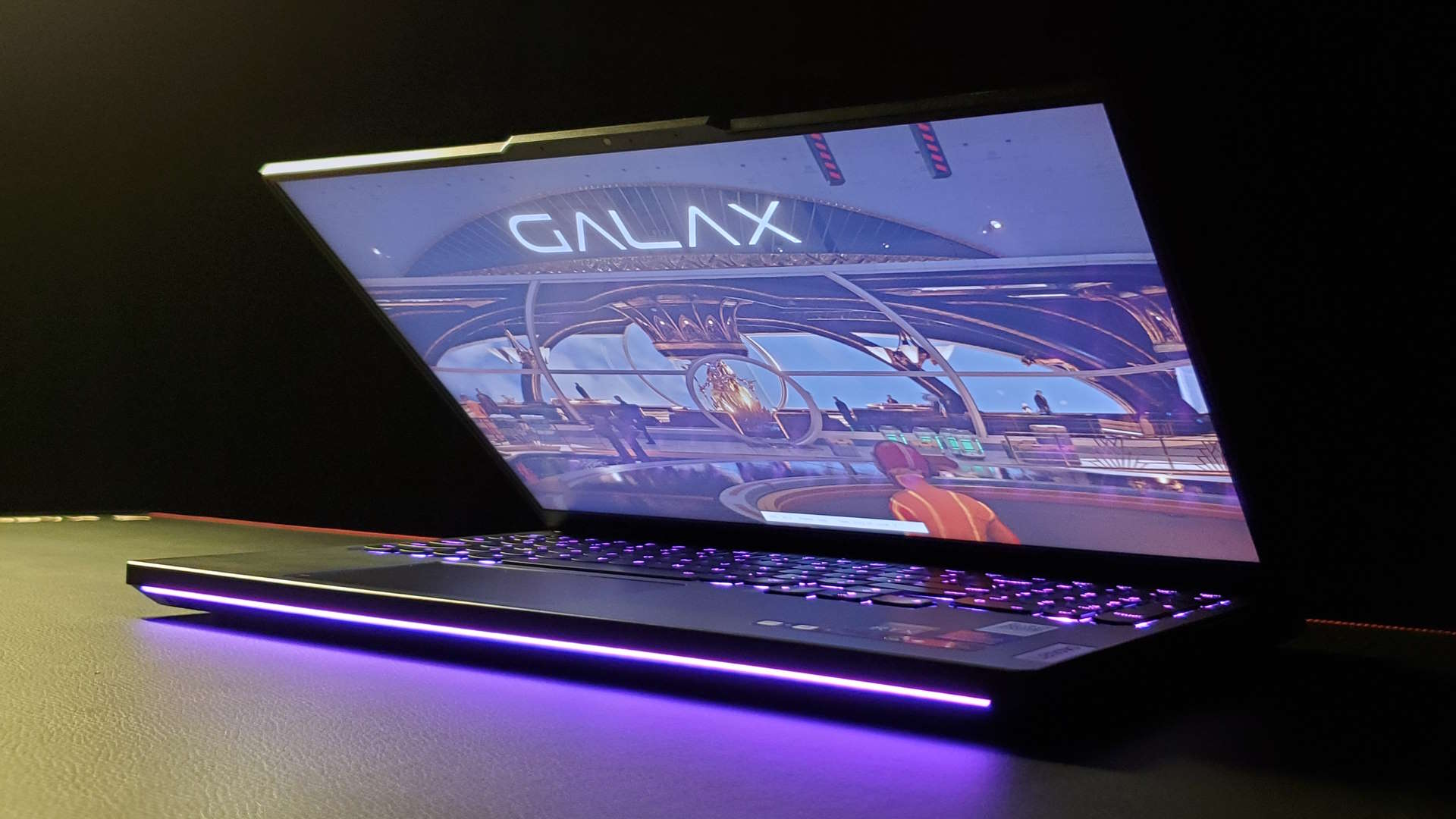Our Verdict
An excellent gaming laptop, that would have me swapping my Razer Blade allegiance in this generation. Especially considering this RTX 4080-powered notebook regularly outperforms the RTX 4090 in the Blade 16, and other far more expensive machines.
For
- Sometimes RTX 4090 beating frame rates
- Solid, grown-up chassis
- Excellent CPU performance
- Competitive price
Against
- Weak battery life
- 1600p screen isn't the most punchy
PC Gamer's got your back
The new Lenovo Legion Pro 7i is an outstanding next-gen gaming laptop. It's a machine that comes in at a price point that makes the rest of the high-end RTX 40-series look even more ridiculous on their lofty $4,000+ perches. And its RTX 4080 GPU gives it the sort of gaming performance that has me questioning why anyone would want an RTX 4090 machine.
This is the first gaming laptop I've seen using the second-tier Ada Lovelace GPU from Nvidia, and it's a doozy.
Like the RTX 4090 before it, the numbering system Nvidia is using for its mobile graphics silicon is a step removed from that inside the desktop versions of the same name. While Nvidia might be making a big deal of the fact xx90-class GPUs are going into laptops for the first time, they're not the same as the graphics chompers in the latest and greatest gaming PCs.
The mobile RTX 4090 uses the same AD103 GPU as the desktop RTX 4080, though the mobile RTX 4080 is actually built from a cut-down version of the AD104 used inside the desktop RTX 4070 Ti.
That means you're getting 7,424 CUDA cores as opposed to the 7,680 of the desktop GPU. That also puts it a long way behind the mobile RTX 4090 with its 9,728 CUDA cores, which ought to mean the top chip will always have the edge.
I've found that's not always the case given the extreme confines of a gaming laptop chassis, as the constraints those can put on a GPU have really been working in this ones favour. Where the lower power demands of the second-tier chip can allow it to clock up to a much higher level than the more thirsty, bigger chips, that can really affect their relative gaming performance.
The frame rate delta isn't always as great as you might assume, and sometimes it's not there at all.
The Legion Pro 7i runs its RTX 4080 at a 150W TGP, which is the effective maximum of the GPU. Though manufacturers are given an extra 25W leeway to bulk up their own specs if they feel they can push a little extra juice through their own systems. That's what has been done with the MSI Titan GT77 and Razer Blade 16 machines, where their RTX 4090 GPUs have been given the full 175W allowance. Lenovo hasn't gone down that route, the Legion Pro knows what it likes, and it likes the 150W TGP and no more.
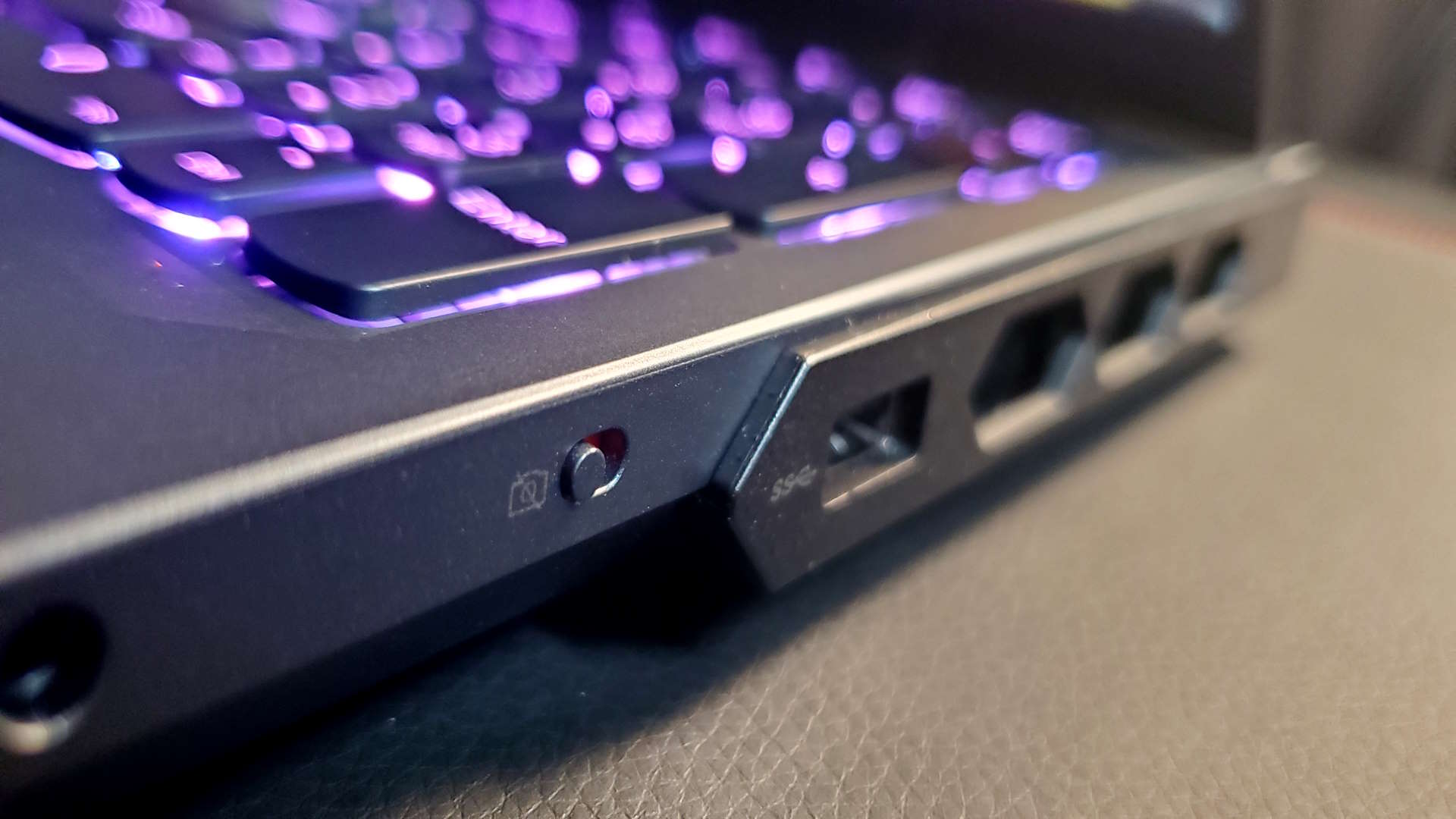
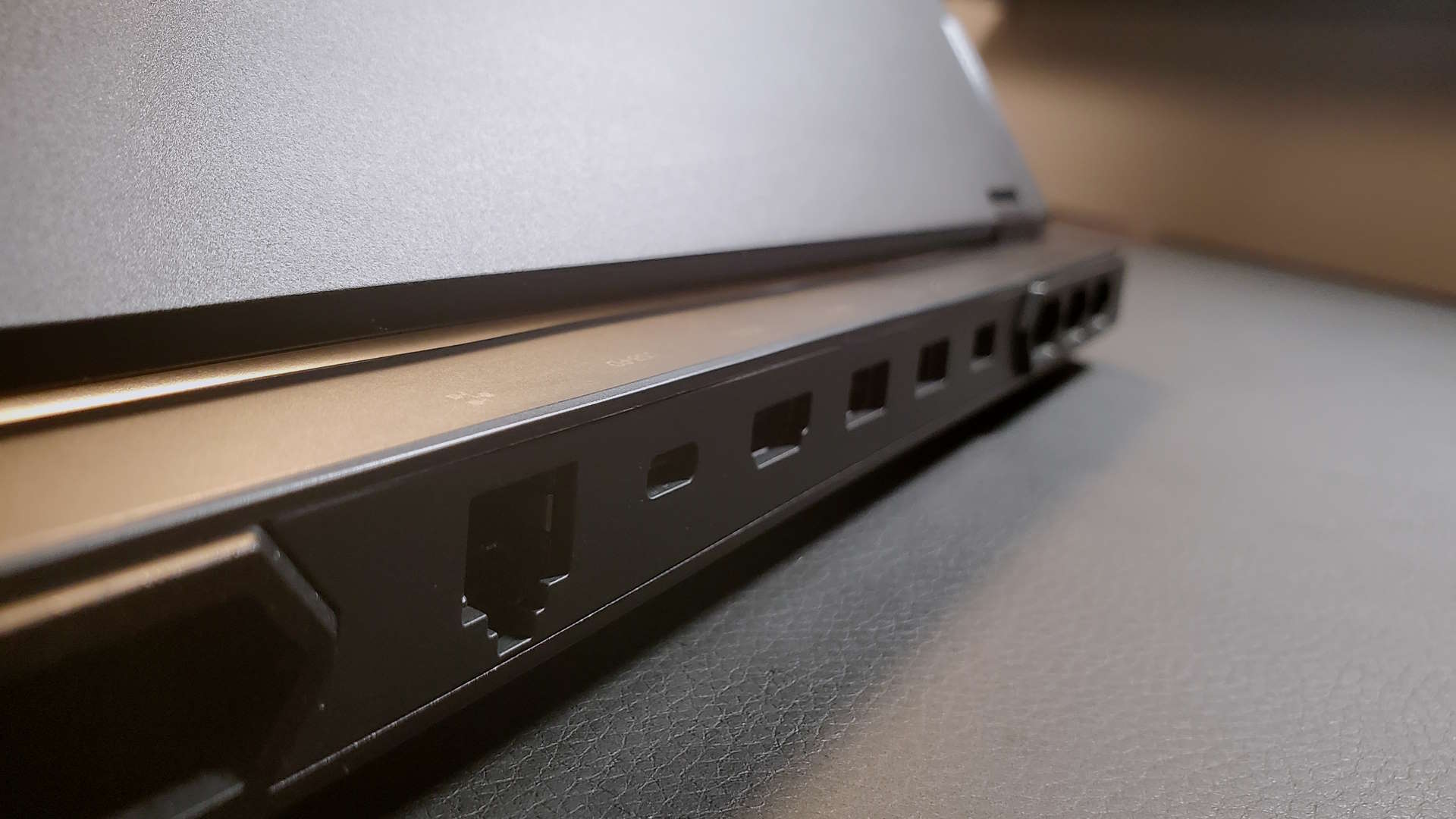
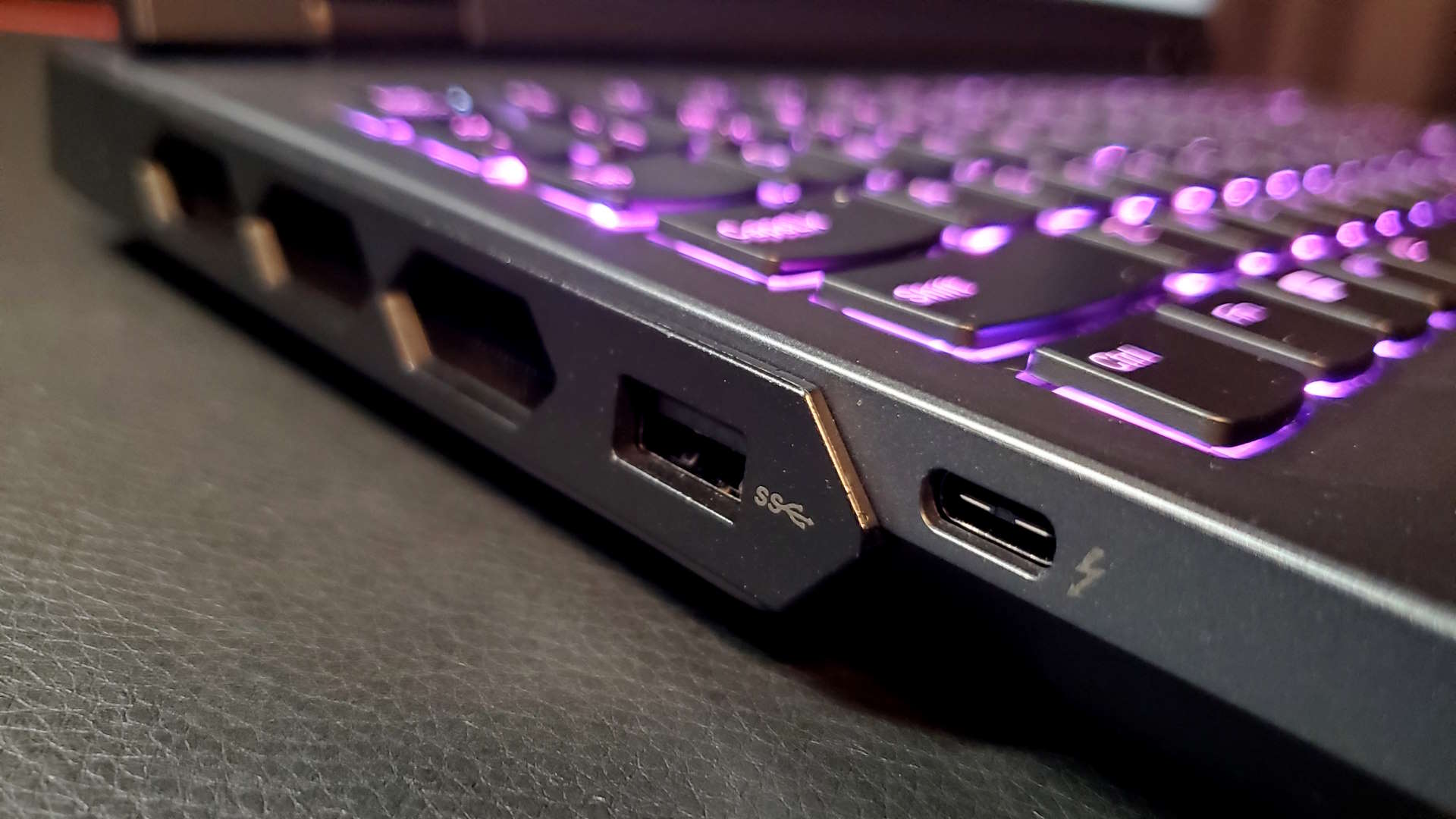
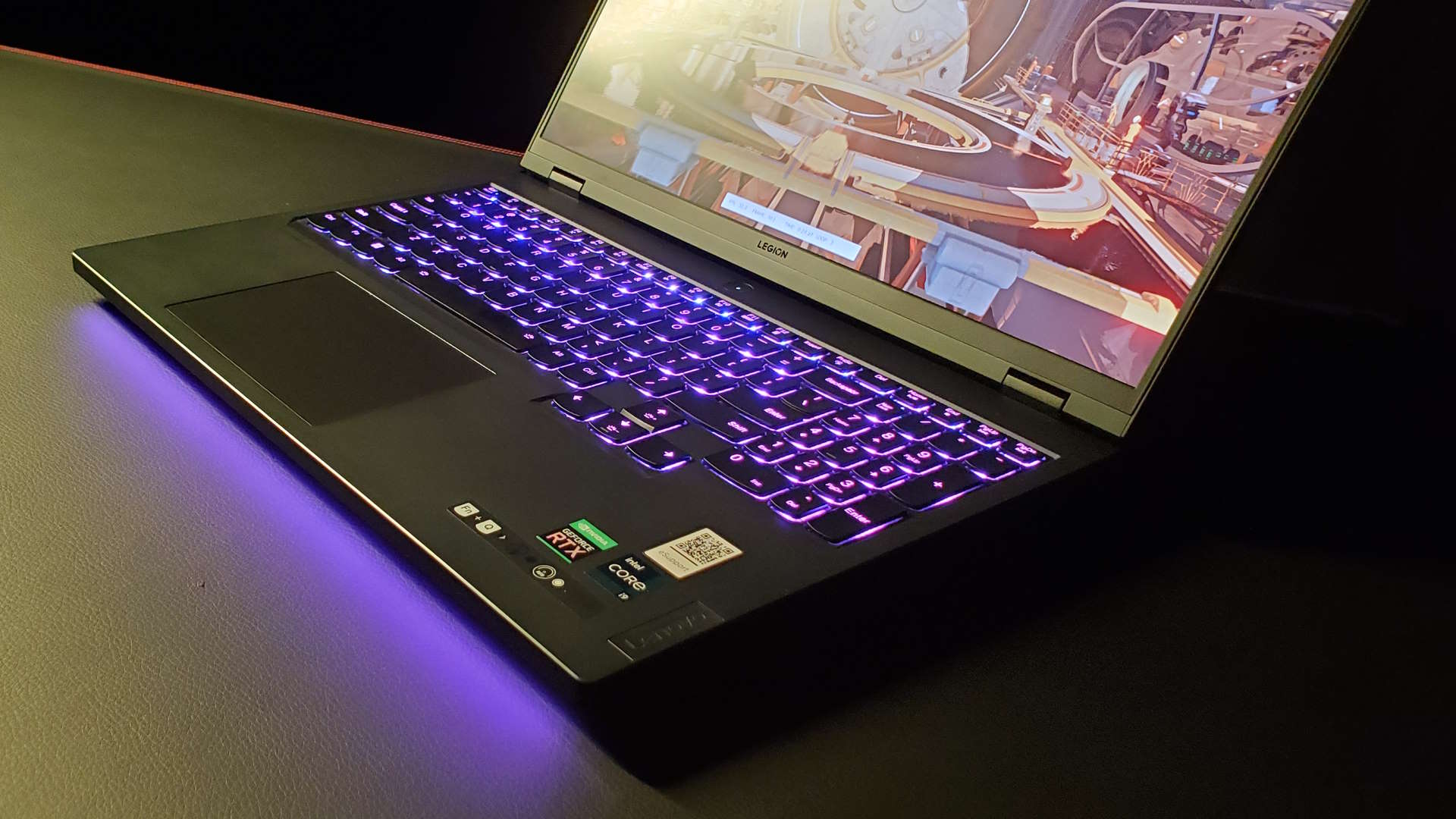
But the power of this machine isn't all about its GPU. And the confusing component nomenclature isn't restricted to Nvidia alone, either. The Legion Pro 7i uses a 13th Gen Intel chip—the Core i9 13900HX. If, like me, you were to assume that would essentially be a slightly higher clocked version of the Core i9 13900H Asus has used in its excellent Zephyrus M16 gaming laptop, then you'd be wrong.
Despite the almost identical name, this is an entirely different, substantially better CPU. Where the one in the Asus is a 14-core design, with six P-cores, this is a 24-core setup with eight P-cores and twice the number of E-cores. They're both capable of 5.4GHz boost clocks, though inevitably the bigger chip has a higher base TDP of 45W.
System performance
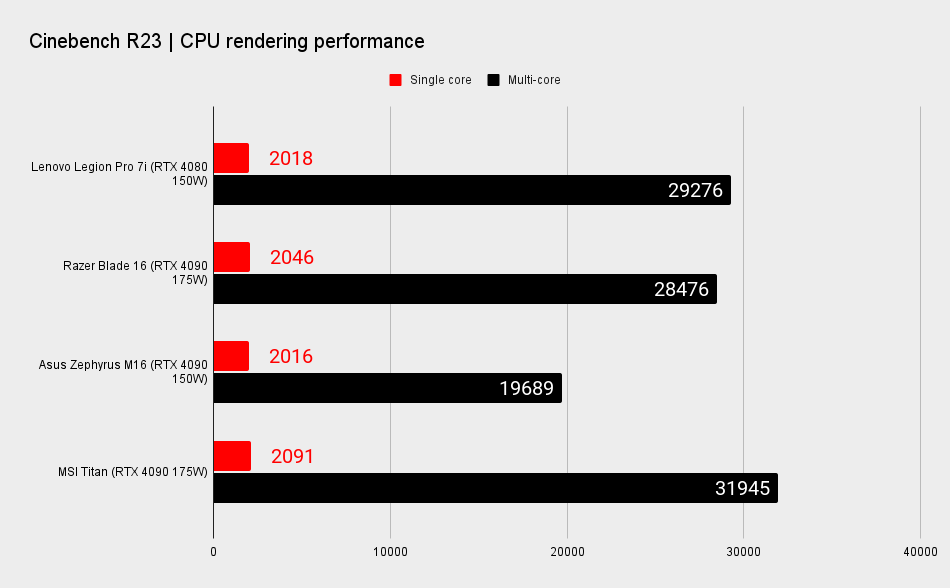
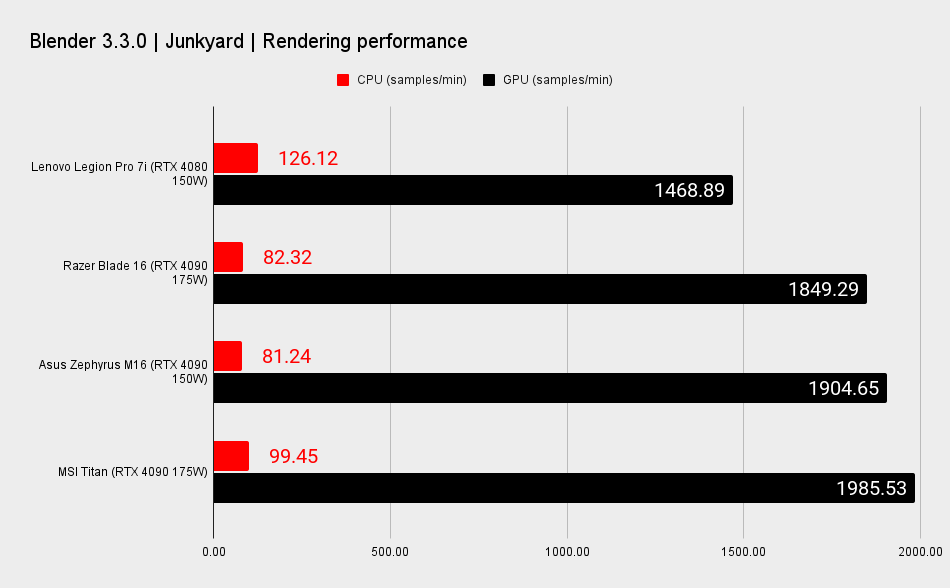
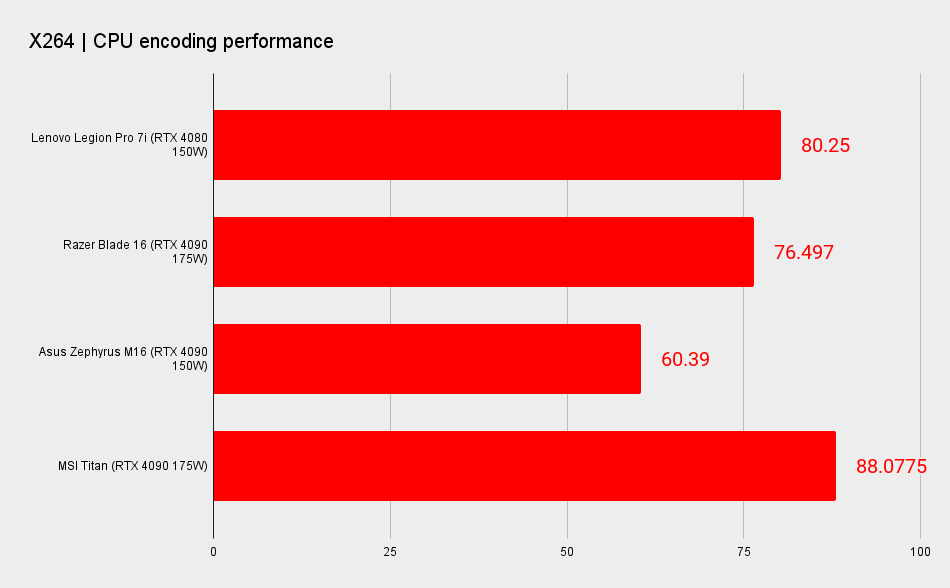
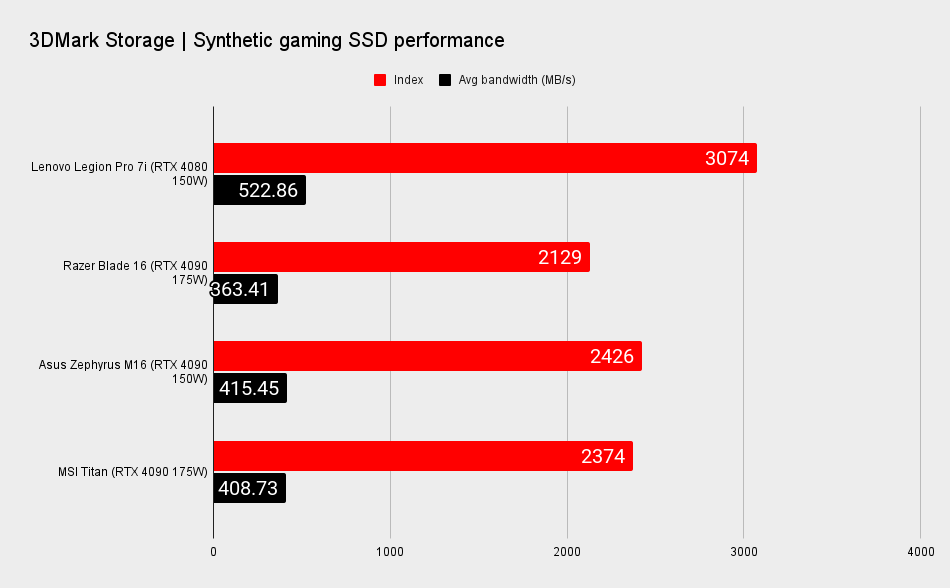
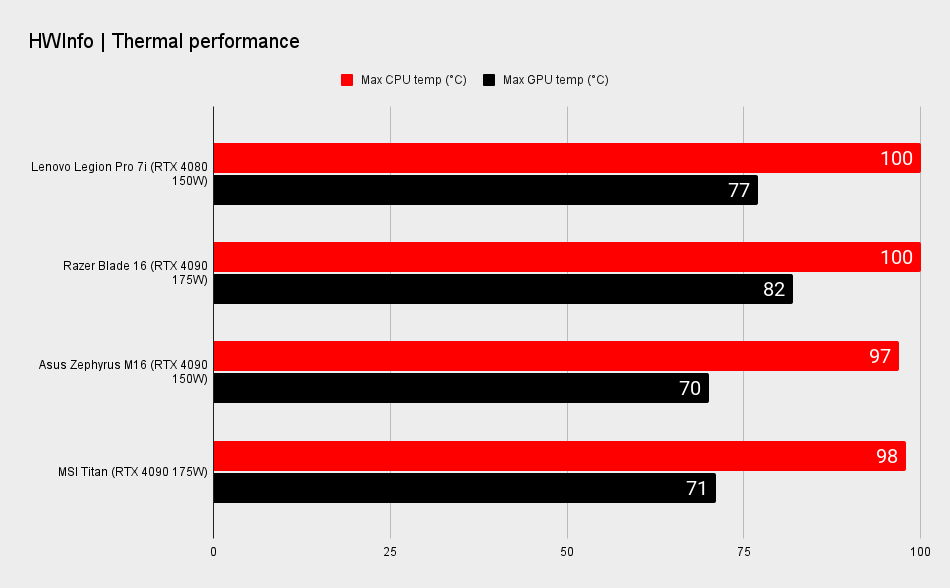
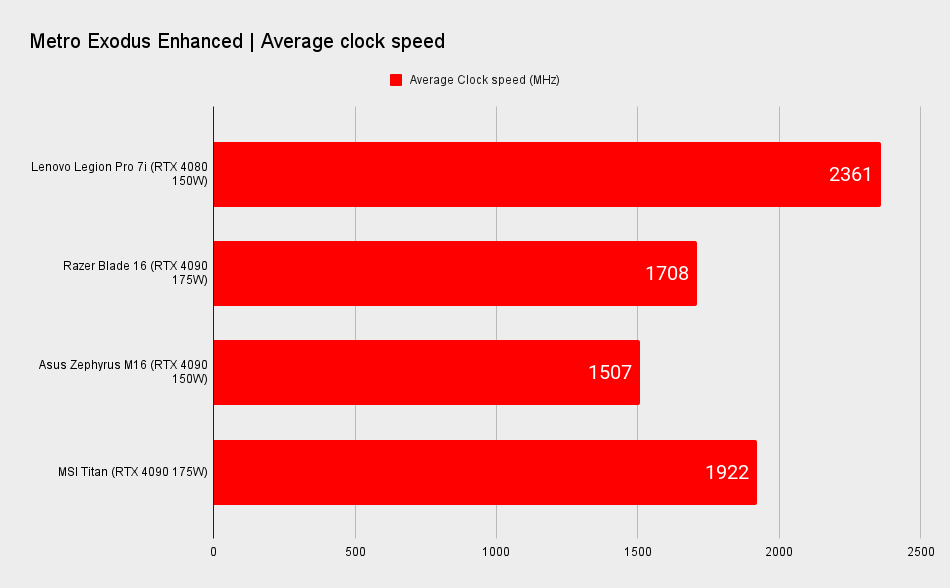
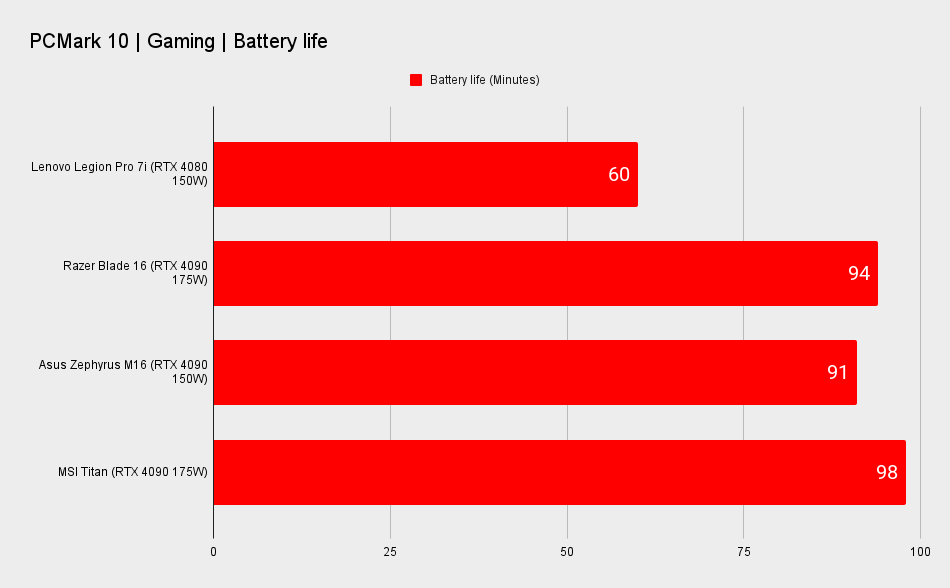
That translates to the actual performance figures though, and shows in just how close it gets to the ever-so-slightly higher clocked Core i9 13950HX used in the Blade and Titan machines.
Then, backing up the key CPU/GPU combination is a 1TB PCIe 4.0 Samsung SSD, and 32GB of DDR5-5600 SK Hynix memory.
The final part of the package is the 1600p 240Hz screen. Which is fine. I fear I've been spoiled by the joy of the mini LED backlights used in the last few laptop displays I've tested, because this one lacks the punch that I now want from a gaming panel.
What it does have, however, is the 16:10 aspect ratio I never knew I needed in a gaming laptop until I started using them on the regular. The 2560 x 1600 native resolution is a great match for the 16-inch screen size the Legion Pro comes rocking. It delivers a better experience when just on the desktop, and gives that little bit of extra screen real estate in games, too. The slight increase in resolution doesn't impact gaming performance significantly when you've got a graphics chip this capable baked into the system.
Which brings us neatly to the letters I've jammed together to form my thoughts on the Legion Pro 7i's performance. Inevitably, I'm benching this against the three RTX 4090-based machines I've reviewed so far, and I would have assumed that it would be significantly—or at least tangibly—behind the top Nvidia GPU. But, as I've said, that's not the case.
Gaming performance
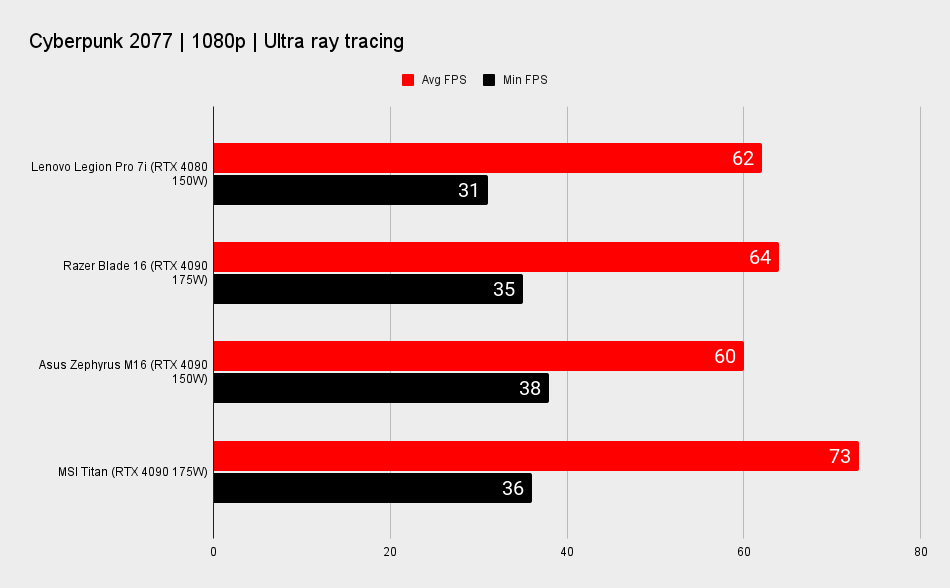
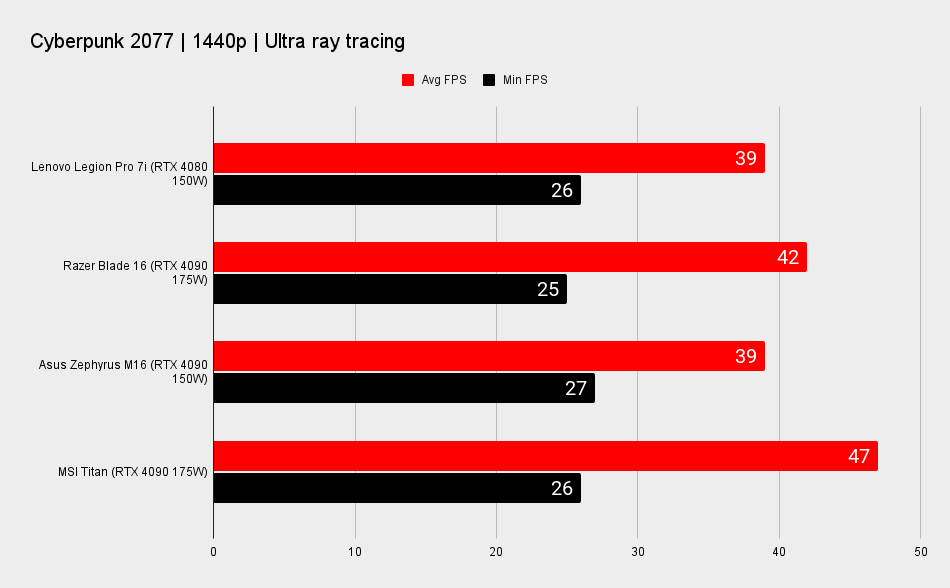
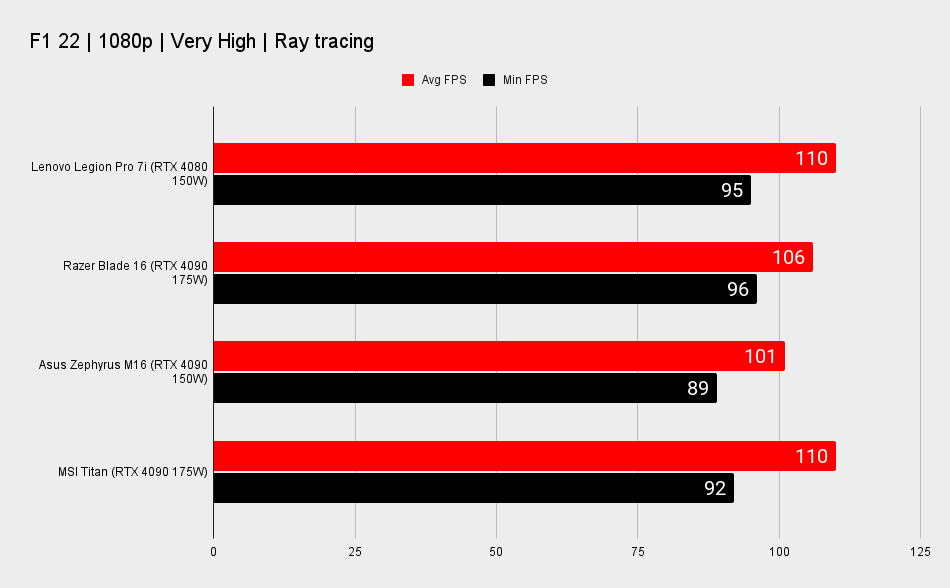
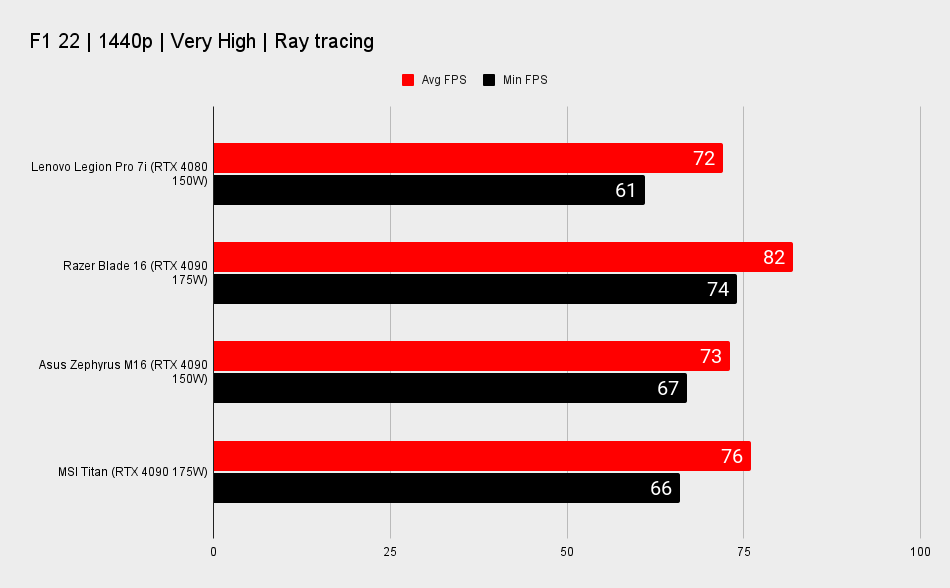
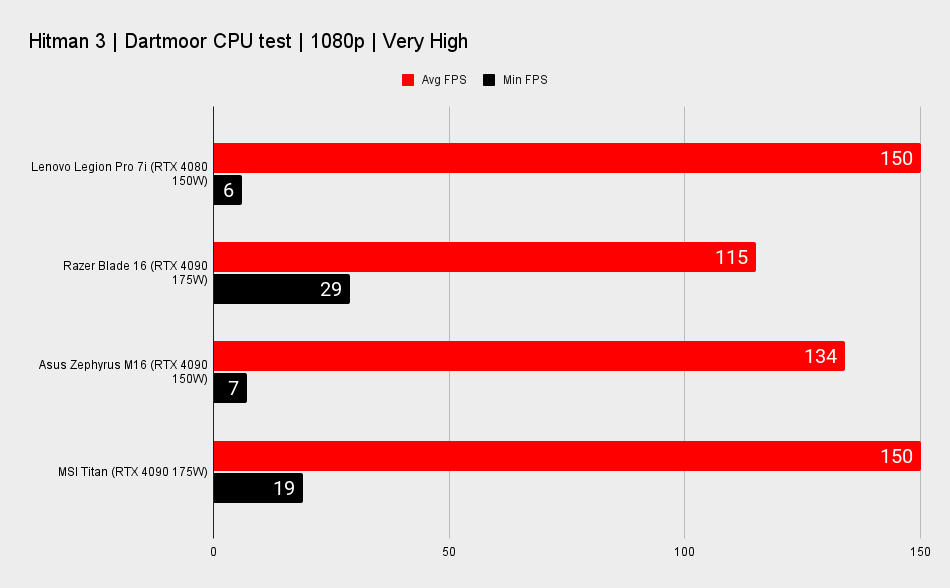
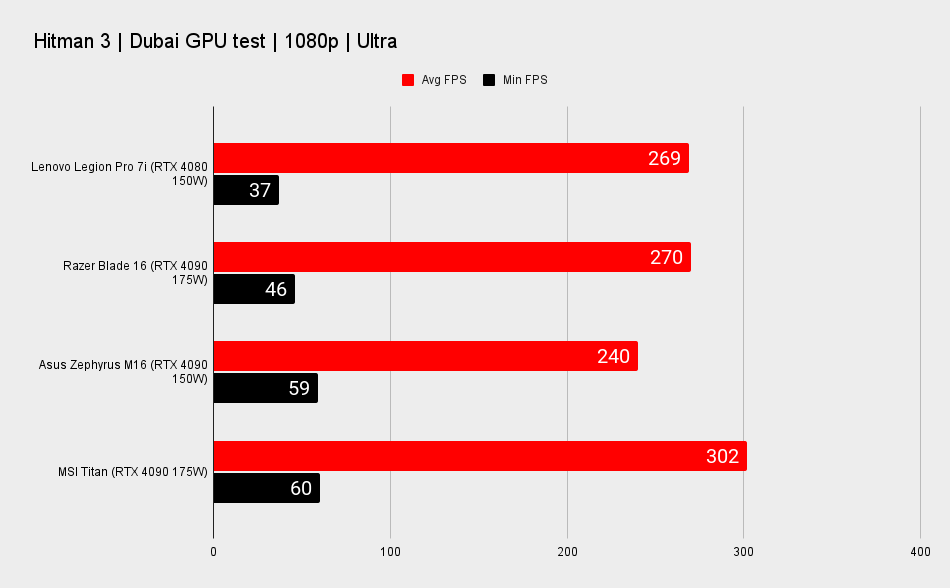
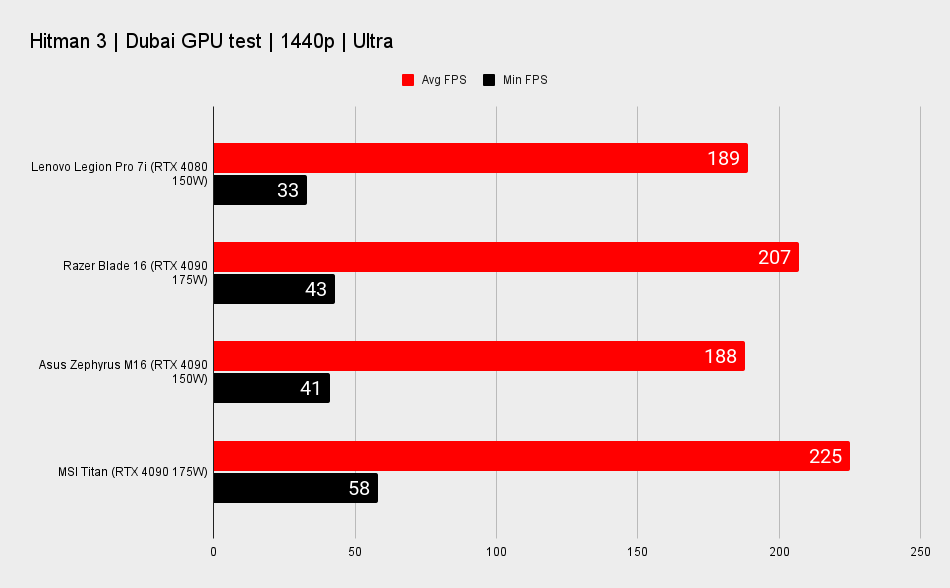
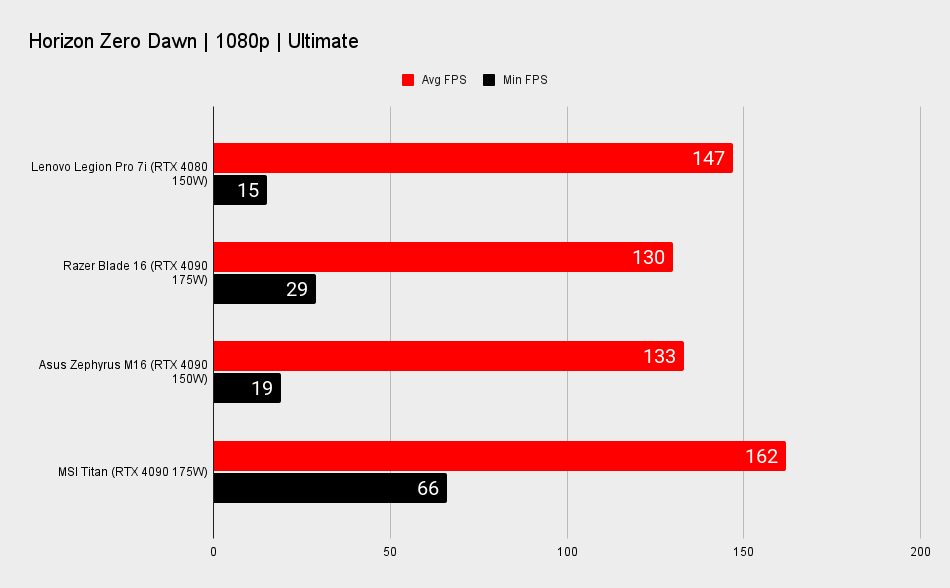
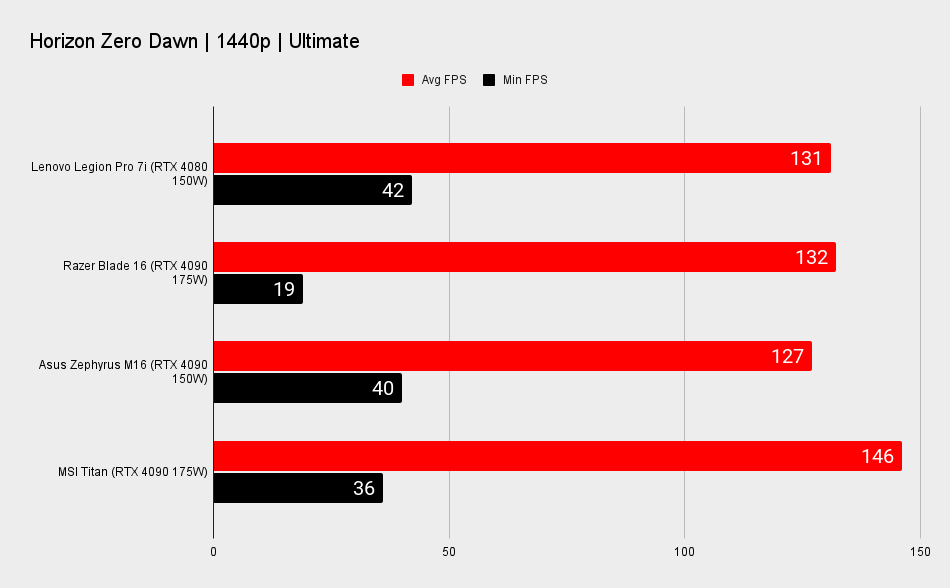
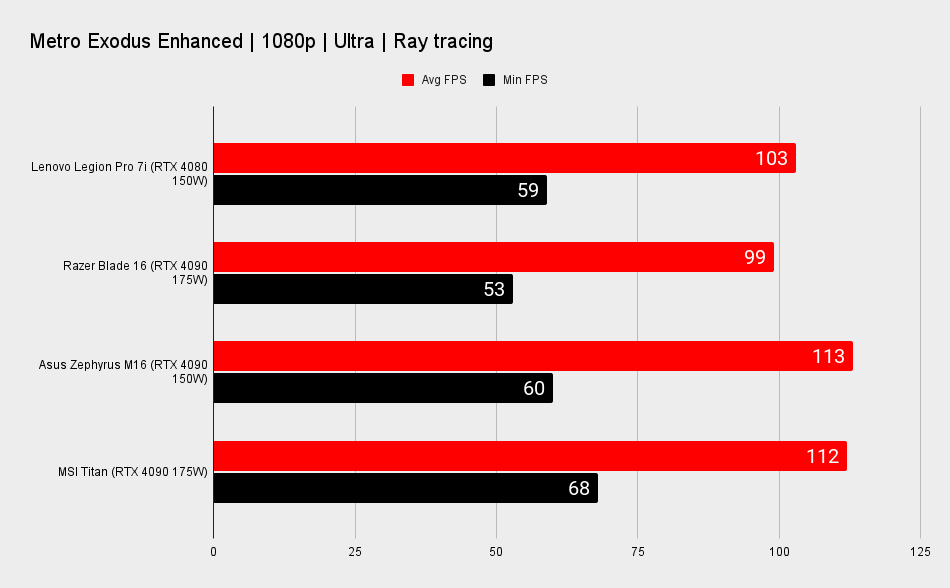
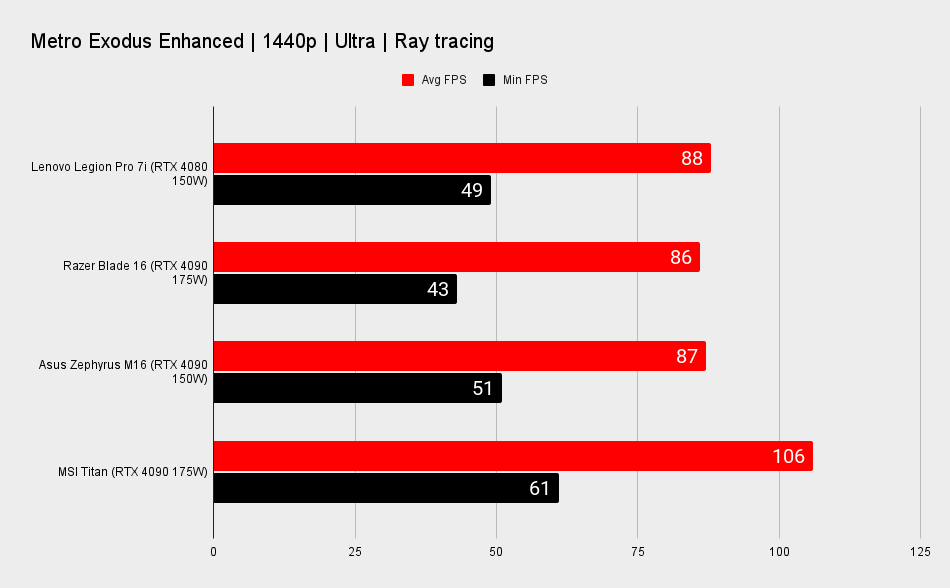
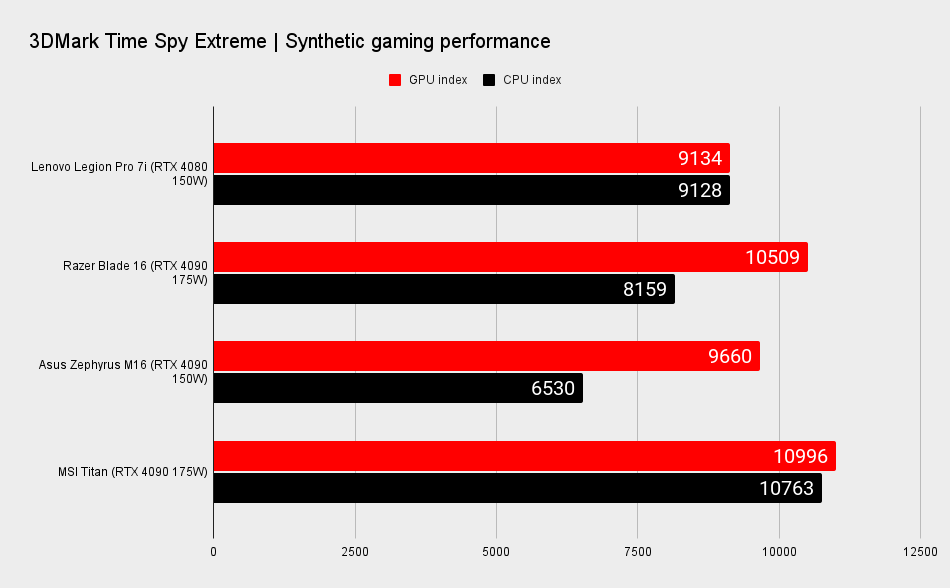
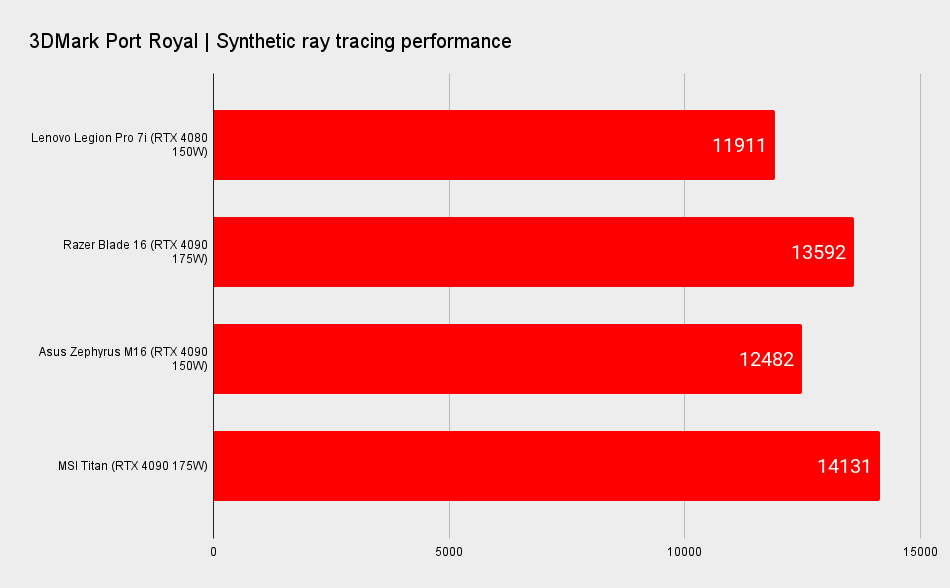
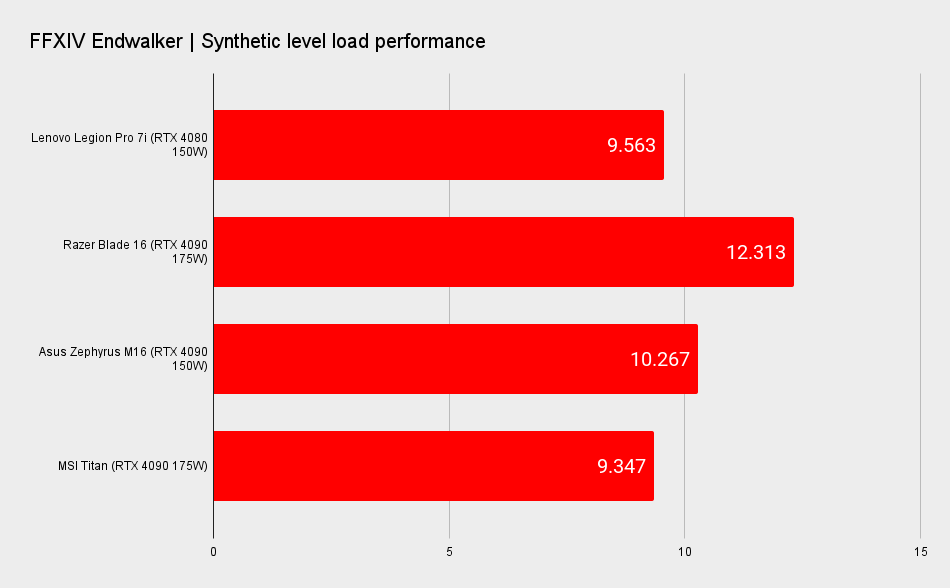
The Legion Pro 7i manages to outperform both the Razer Blade 16 and the Asus Zephyrus M16 regularly, at both 1080p and 1440p resolutions. Only the chonky boi MSI Titan GT77 is able to utilise its RTX 4090-ish GPU to its fullest potential. And then at the expense of acoustics and potentially your sanity.
I don't want my laptop to be some monstrous hyper-aggressive looking machine.
And most especially your bank account.
Because that's the thing I keep coming back to when I'm looking at this Lenovo machine. It's not the prettiest, but it sure can smash out them high gaming frame rates. And does it for around $2,000 less than the Blade 16. Okay, there's always going to be a Razer premium for a Blade laptop, but the Zephyrus M16 is still $4,000, which means you're saving well over a thousand dollars to get the same performance figures and a better CPU. Sure, the laptop screen isn't mini LED, but that's a compromise I'm willing to make if I still get to have a 16:10 that still looks good.
I'm talking about compromise here, but there honestly isn't anything big you've really got to compromise on beyond that super expensive screen. And hell, it's still a 1600p 240Hz panel. The gaming battery life is pretty weak, however, lower than any of the RTX 4090 machines I've looked at, but as long as you don't plan to play without a charging cable it's much less of an issue.
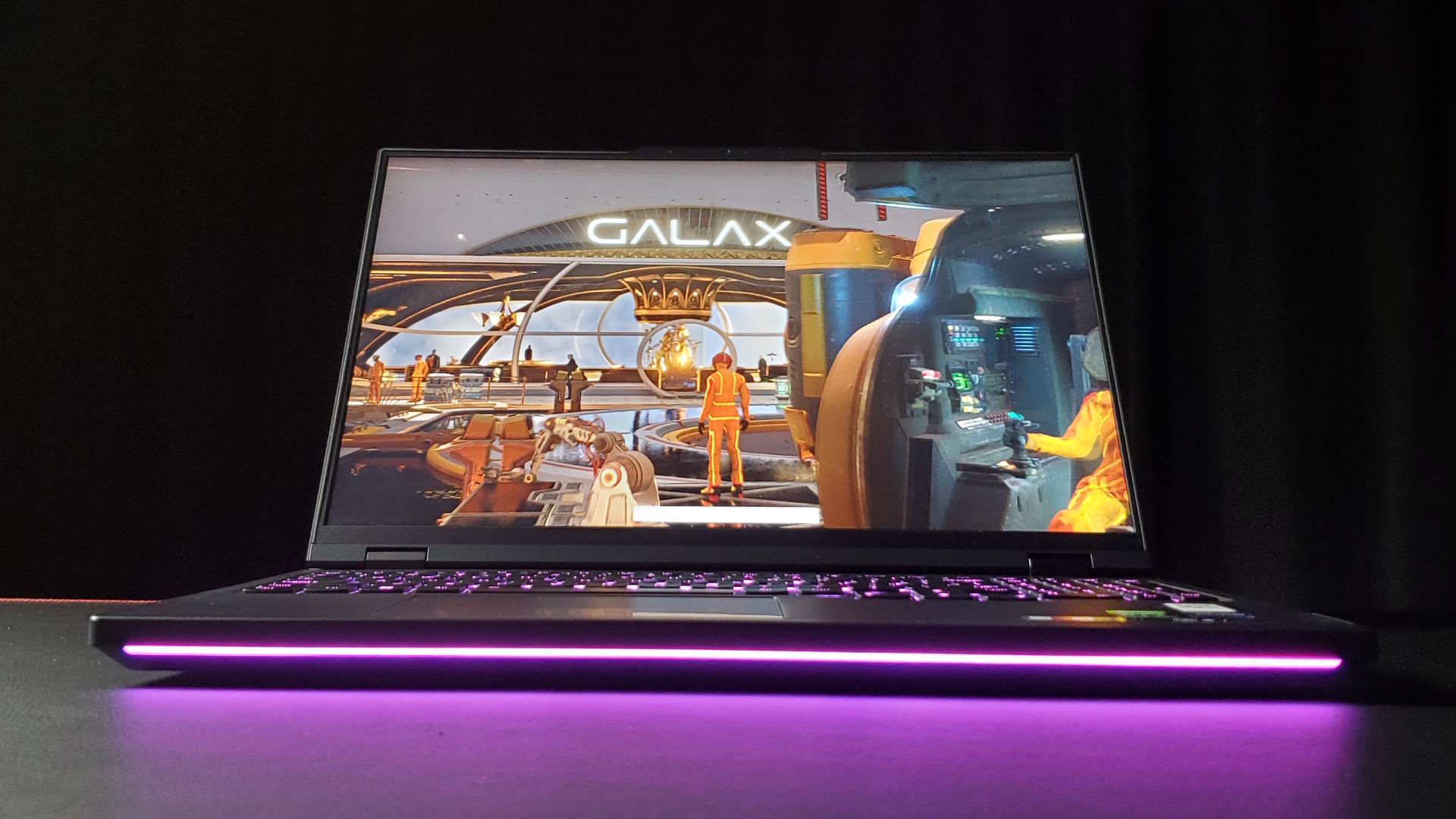
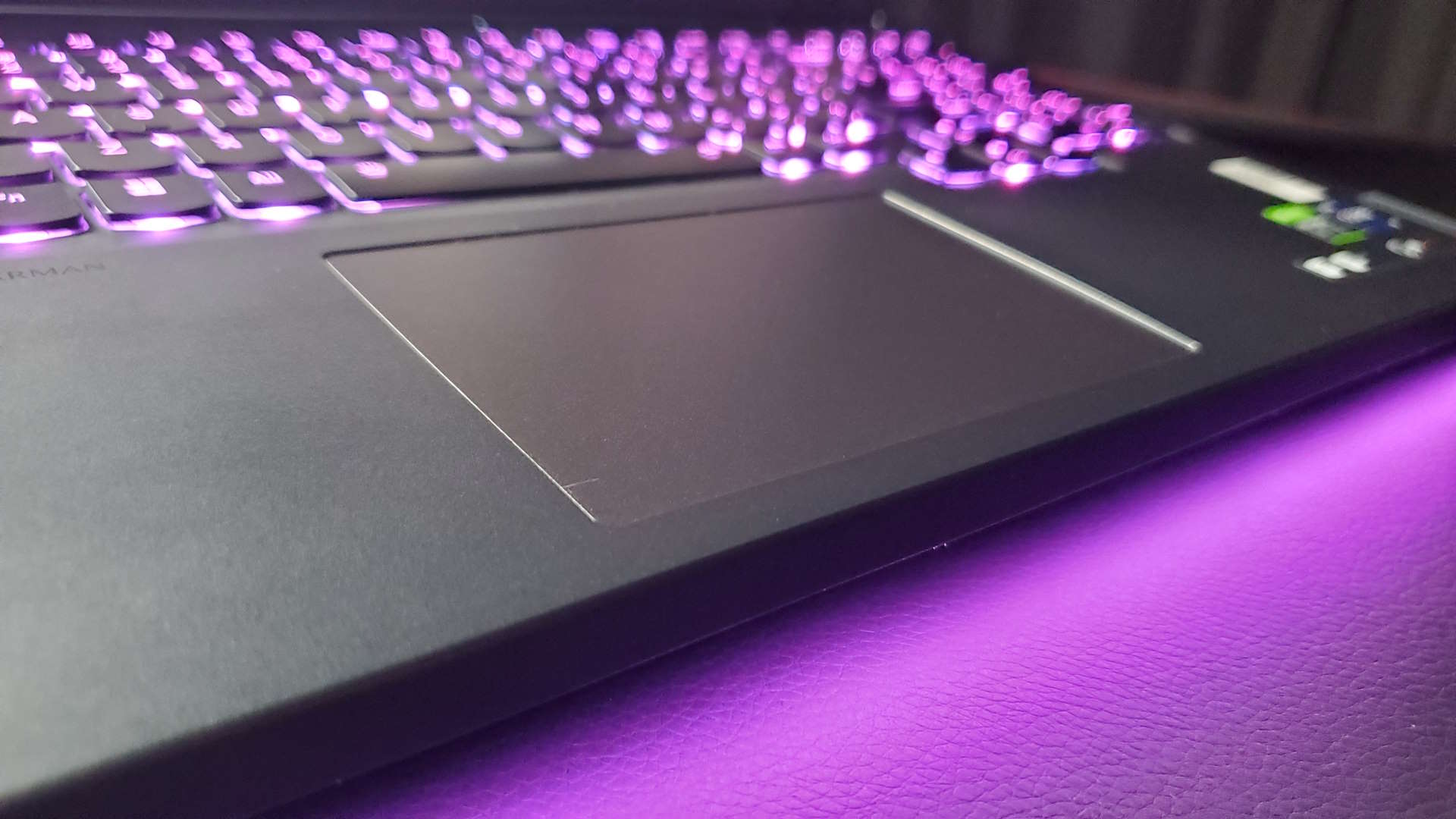
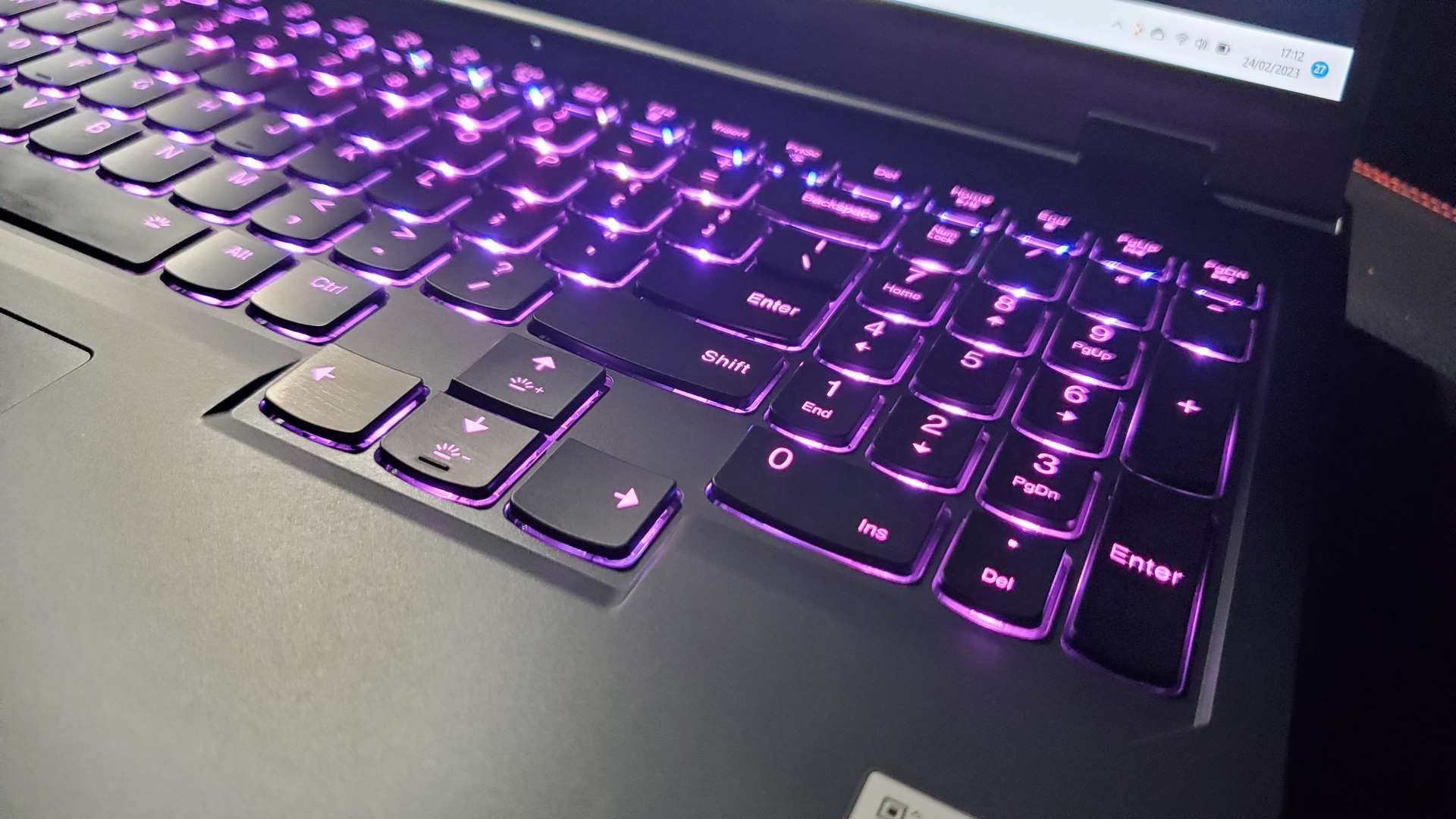
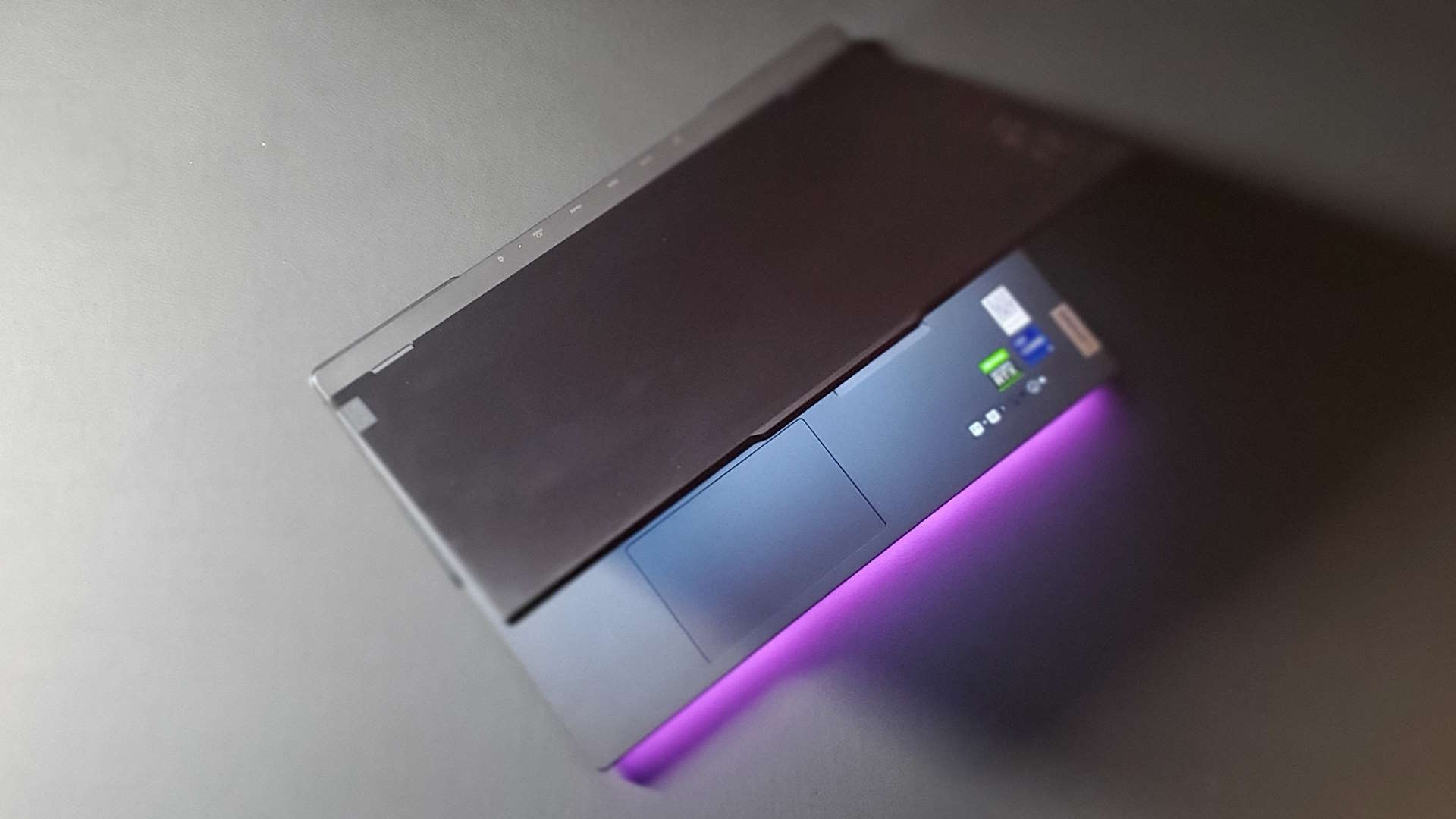
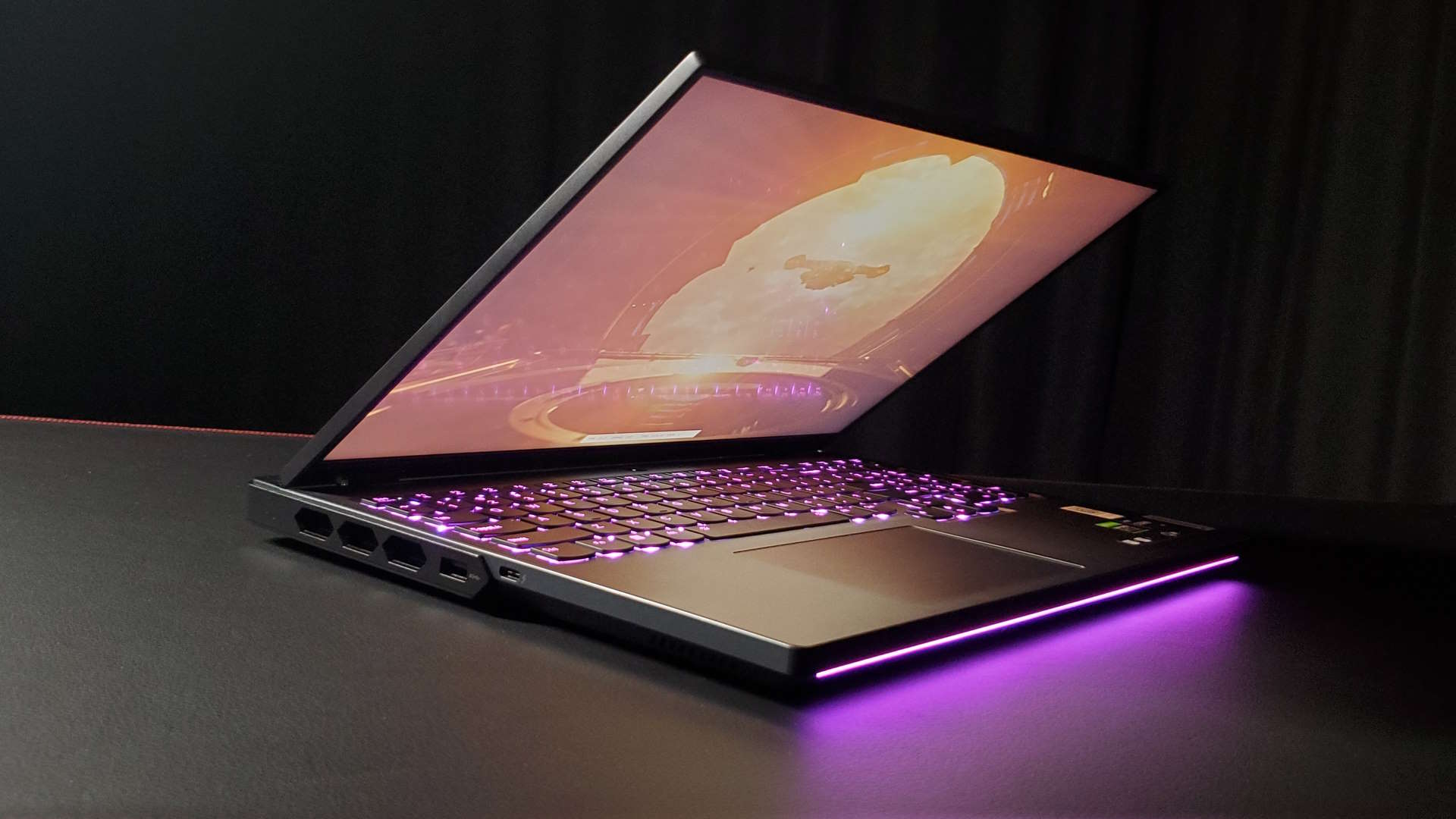
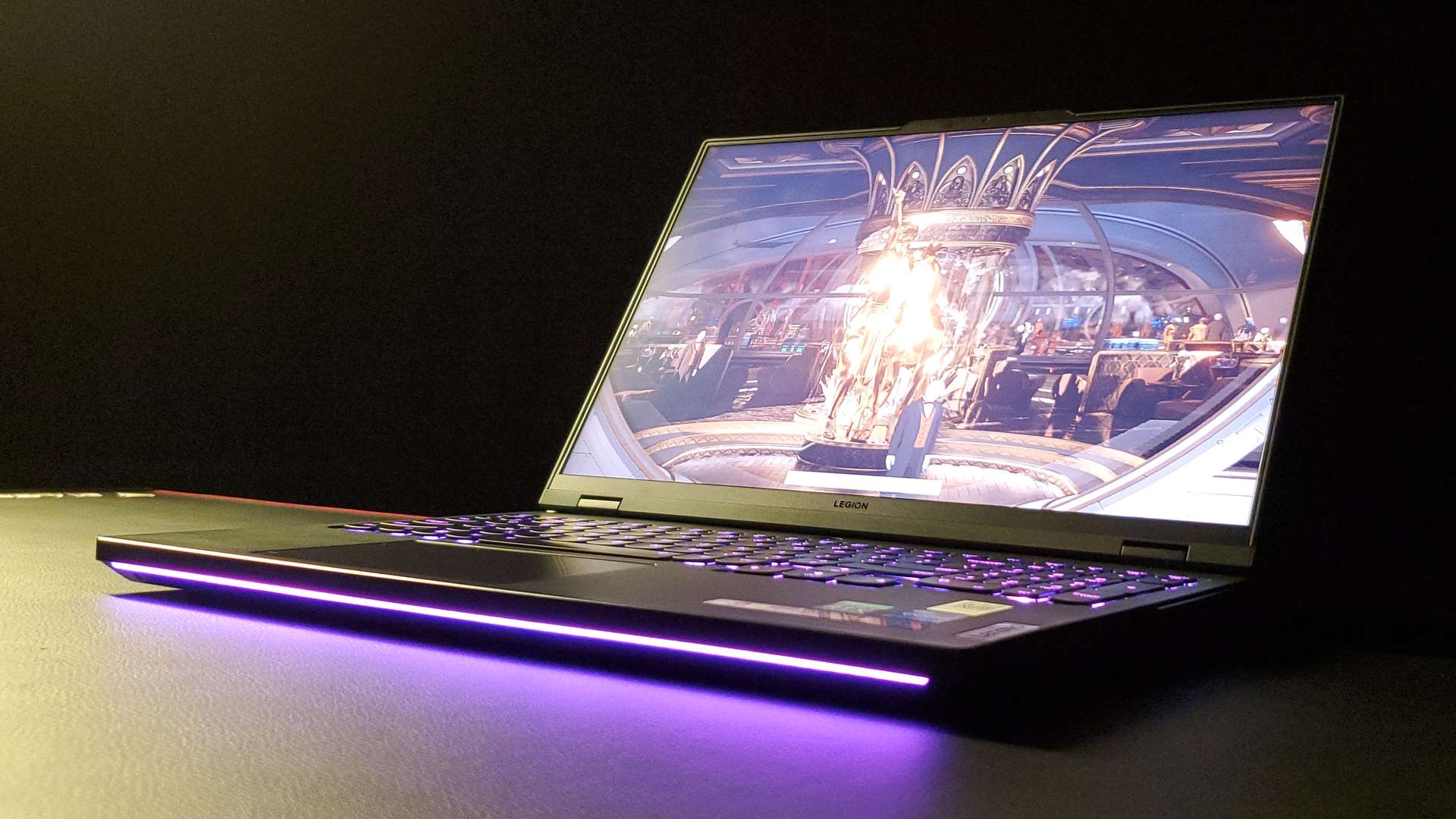
The actual chassis does look and feel like a Lenovo; more office machine than the sort of hyper angular case you'll see Asus, Gigabyte, or MSI traditionally wrapping around their gaming laptops. And that's no bad thing. I don't necessarily want my laptop to be some monstrous hyper-aggressive looking machine, and it's got per-key RGB illumination and a light bar up front so you can still get your laptop lit. And, speaking of those keys, the Legion Pro has an excellent keyboard. Like the MSI Titan, you get a numpad, but unlike the MSI Titan it's actually usable.
I also appreciate the way the cursor keys are separated from the mass of keys, too, and that the slight curl to the edges of the keys actually make them less prone to mis-strikes. At least, that's what I've found with my fat fingers.
So, it feels like a grown up gaming laptop, is eminently usable, has performance in spades—in both CPU and GPU terms—and doesn't cost anywhere near the same amount as the next-gen machines we've already checked out. I mean, it's not cheap; $2,750 / £2,800 is still a not inconsiderable chunk of change. But that's not an unexpected price tag for such a high powered notebook, and considering that's the same price as the RTX 4060-powered Blade 16 it's better than a lot of the competition. And as much as I've loved Razer's gaming laptops over the years, I would 100% be buying the Legion Pro 7i instead.
An excellent gaming laptop, that would have me swapping my Razer Blade allegiance in this generation. Especially considering this RTX 4080-powered notebook regularly outperforms the RTX 4090 in the Blade 16, and other far more expensive machines.

Dave has been gaming since the days of Zaxxon and Lady Bug on the Colecovision, and code books for the Commodore Vic 20 (Death Race 2000!). He built his first gaming PC at the tender age of 16, and finally finished bug-fixing the Cyrix-based system around a year later. When he dropped it out of the window. He first started writing for Official PlayStation Magazine and Xbox World many decades ago, then moved onto PC Format full-time, then PC Gamer, TechRadar, and T3 among others. Now he's back, writing about the nightmarish graphics card market, CPUs with more cores than sense, gaming laptops hotter than the sun, and SSDs more capacious than a Cybertruck.
